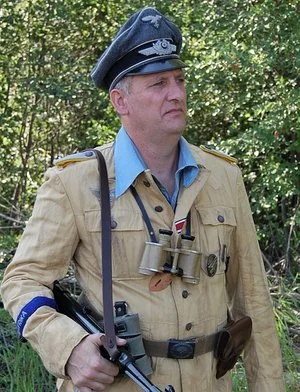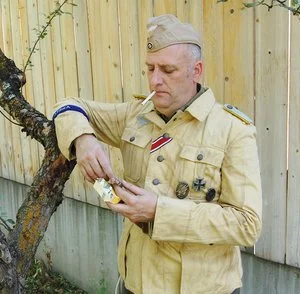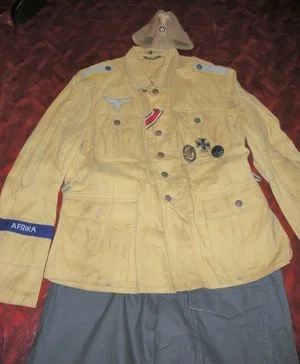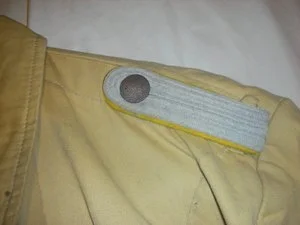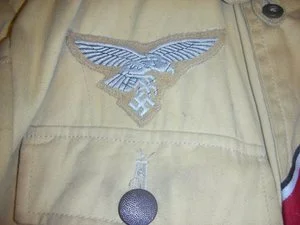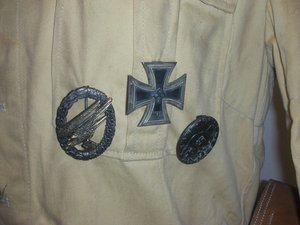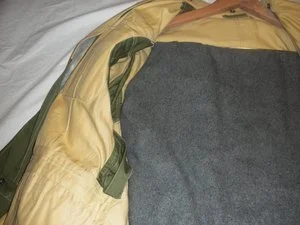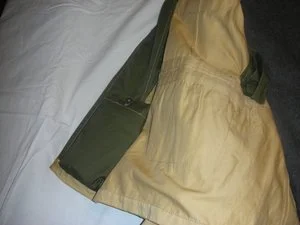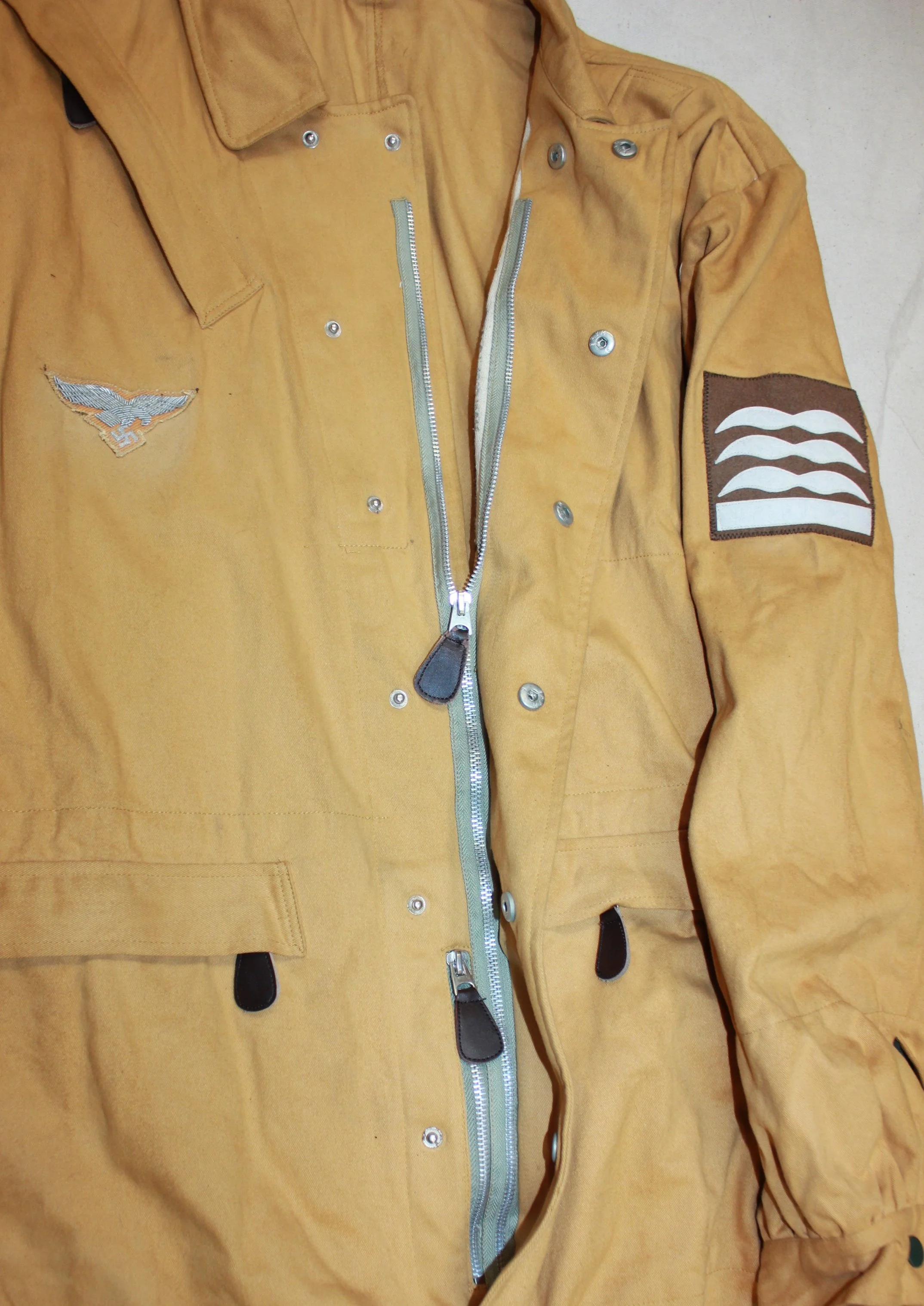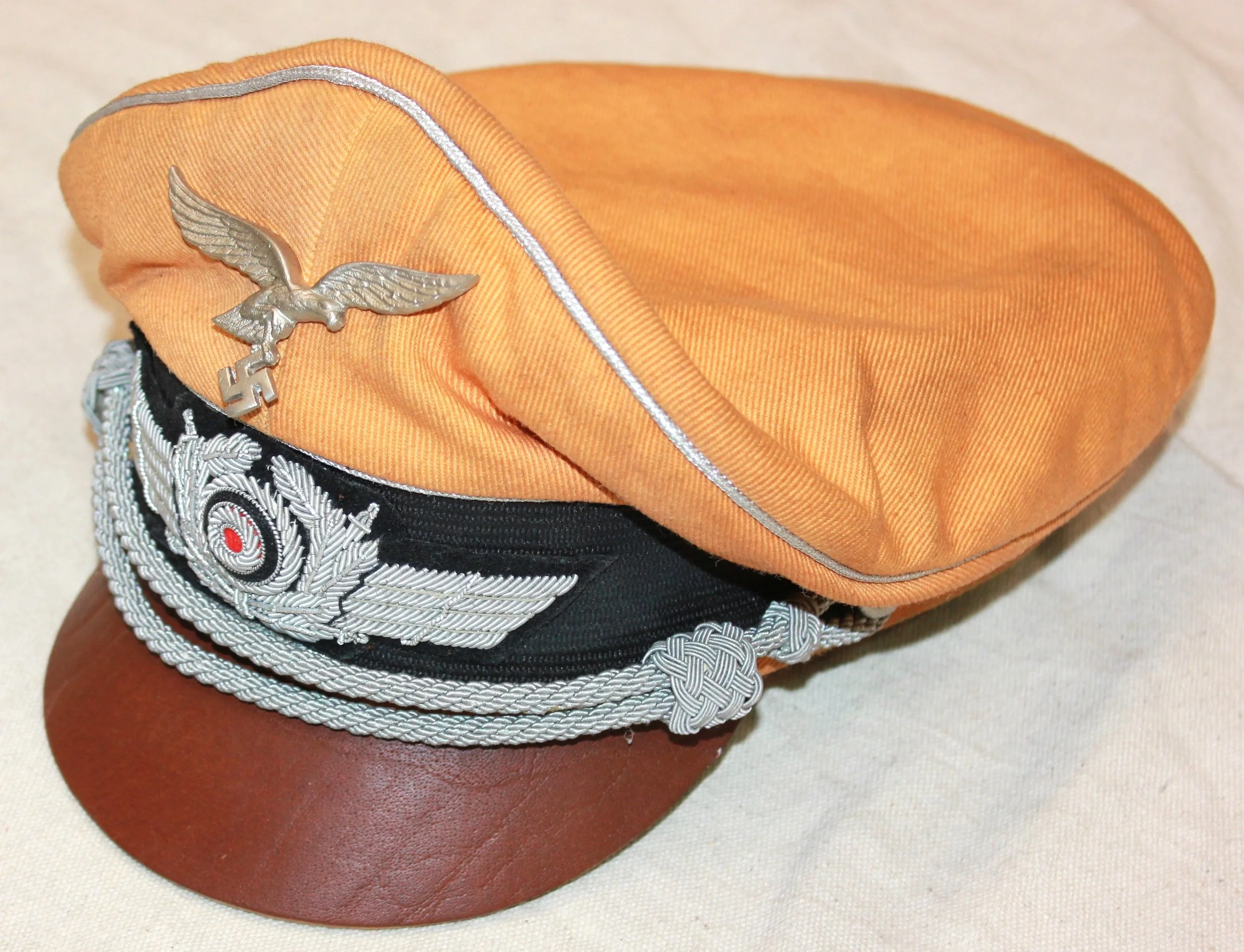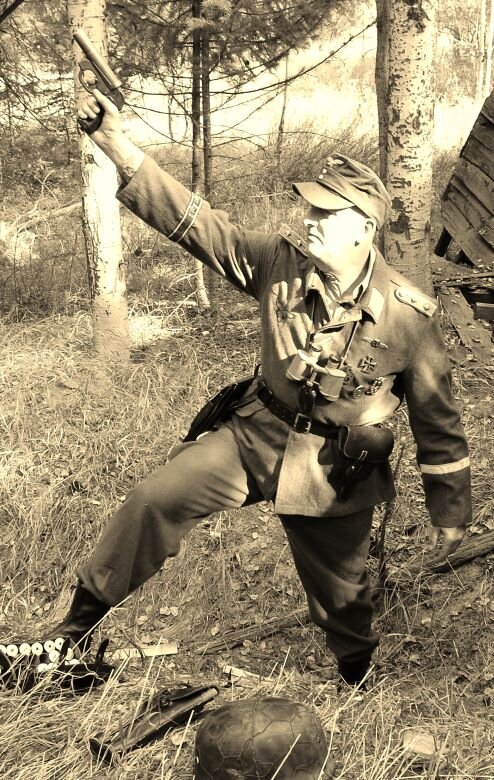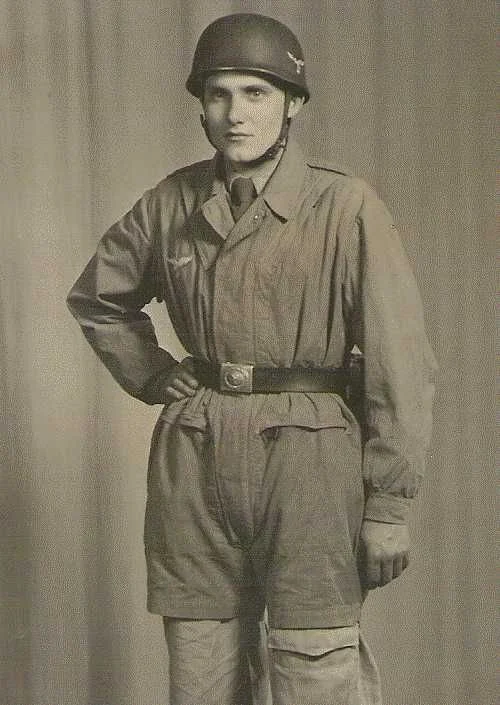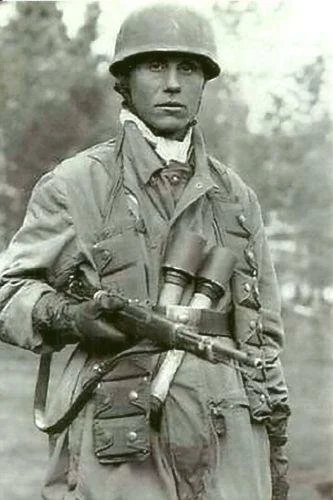Luftwaffe Fallschirmjager Personnel:
Leutnant, Luftwaffe Fallschirmjager Detachment / Afrika:
This Lieutenant is fighting as part of Rommel's Afrika Korps. He wears the Luftwaffe in theatre campaign cuff title produced in officer quality. This standard Luftwaffe tropical blouse has been upgraded with officer-quality eagle and shoulder boards. Probably joining the LW after the war began, he is representing the period around 1942- 43.
He has been awarded both the Iron Cross I & II classes for demonstrating leadership in combat. He has been awarded the Luftwaffe Badge for completing airborne training and the Black Wound Badge for his wounds. With his tropical, he wears woolen breeches of Heer issue and an enlisted cap, suggesting he may have had to put together a uniform when he was out of the hospital from his wound.
Hauptmann (Captain) Tropical Jump Smock:
Hauptmann, Luftwaffe Fallschirmjager (FJR-3):
This captain, a veteran campaigner, wears a standard-issue Fliegerbluse favored by all LW personnel. The shoulder insignia is piped in gold yellow for flight and has two rank pips indicating his rank. His collar insignia is also golden yellow with embroidered "rank gulls" and oak leaves which again are indicative of his rank.
His cuff title is that of Fallschirm-Jager 3, produced in officer-quality embroidery. FJR3 was raised mostly from members of the Sturmregiment, which had its roots in the Heer FJ Battalion that was brought under LW command early in the formation process of the FJ branch.
This man has campaigned from early in the war, probably in Poland, the Low Countries, but not in Norway. He participated in the Greek campaign and the invasion of Crete shown by the Kreta cuff title. Part of the Russian Russia as shown by his "Frozen Meat Award" ribbon that is under his Iron Cross II Class ribbon sewn into the bluse.
This man's previous connection to the Army FJ battalion is clear as he still wears his Army FJ Qualification badge. He won the Luftwaffe Ground, which is probably due to an upgrade to one of 50 to 100 engagements. He has also been awarded the LW Close Combat Clasp in silver for several hand-to-hand encounters.
The Iron Cross I Class shows he has continued to demonstrate leadership in combat, and his wound badge shows he is not afraid to be in action. With his tunic, he wears the standard FJ trousers with a special pocket for the FJ Messer or gravity knife as well as openings at each knee for placement and removal of kneepads (which were normally worn on the outside in combat jumps.) With these trousers, he wears special pattern FJ boots.
The uniform now has the Officer’s version of the Luftwaffe’s M-43 Cap. Originally, I had a nice officer, “Crusher,” but it wasn’t something one would want to jump into battle with; they’re awkward. And you would stand out from the opposing forces, generally not a good thing. And the mandatory helmet.
* The wire-covered helmet was actually from a friend of mine; I don’t own that, but it ended up in the shoot. I ran short of something at the time, but it shows a good example of one fairly common use for attaching foliage to the helmet.
Early “Feldgrau” Jump Smock”:
This was the “initial” style and color used, in the first drops. I believe the National Eagles were applied at the factory, but the sleeve ranks were applied by the troops, and were fairly rare, as the smock itself was simply disposable.
Luftwaffe Fallschirmjager Splinter~Camoflaged Jump smock:
Now too find the story for this…or make a new one! Stay tuned.
Oberfeldwebel, Deutsche Kreuz In Gold Träger, 1. Fallschirmjäger Division, Italy 1944, Custom Jacket:
The 1. Fallschirmjäger Division was formed in October 1938 under the command of Major-General Kurt Student and comprised two Fallschirmjäger Regiments. In April 1940, the division took part in the invasion of Denmark and Norway during Operation Weserübung. Fallschirmjäger units fought continually throughout the war in Belgium, the Netherlands, Crete, and Russia.
In July 1943, the division opposed the Allied landings in Sicily, making a fighting withdrawal to the Italian mainland The division would fight against the 1st Canadian Division at Ortona, hold the Winter Line against the British 8th Army, and then fight the bloody battle at Monte Cassino. Following the retreat from Rome, the division joined the I. Fallschirmkorps on the Adriatic coast conducted a fighting retreat to the Po River and finally surrendered in May of 1945, after 20 months of nearly continual fighting.
The Oberfeldwebel has modified his Fallschirm-Bluse or Knockensack (Bonesack as known to collectors), turning it into more of a general wear jacket. In the photo, he is wearing this over shirt and sweater, appropriate for the Italian weather he may find himself in. With belt and holster, he perhaps has taken a headquarters position. It is difficult to determine at the point of this study as his name has not been discovered or his face is cross-matched with known Fallschirmjäger DKG winners.
The wearing of awards on the Fallschirm-Bluse with parachute harness for parades was common, but with the Bluse converted this is now for everyday wear. The modification was probably done either by the unit tailor or by a civilian in one of the Italian towns along the front, as the fighting in Italy often held the same lines for long periods. He wears a late war pattern of the single button Einheitzfeldmütz or M43 cap, further dating the photo to 1944 or 45. His name is lost to history at this time.
Tan and Water Pattern Jump-Smock:
This came out at one of our old photo shoots, It was my friends, I wouldn’t give it up, but I had pictures in it anyway, and we got to see how it compared to the others, and maybe the most effective, and the post-war Army used the same pattern for some time. So anyway, the Sand and Water pattern I wanted to have it shown:



